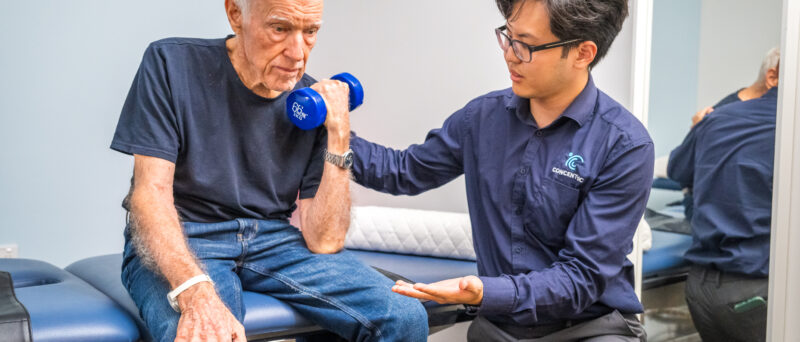Recovering from surgery involves gradual and controlled physical activity to regain strength, mobility, and overall well-being. Starting an exercise program post-surgery requires a personalised approach tailored to individual needs and medical recommendations. Here are essential tips to guide you through the process:
Consult Your Medical Practitioner, such as your surgeon or general practitioner
Before starting any exercise program after surgery, consult your general practitioner or surgeon for personalised recommendations. They can provide guidance based on your specific surgery, medical history, and current condition.
Start Slowly and Progress Gradually
Begin with gentle exercises that focus on mobility and flexibility. Start with short sessions and gradually increase duration and intensity as tolerated. Listen to your body and avoid over exerting yourself.
Focus on Range of Motion and Mobility
Incorporate exercises that improve joint flexibility and range of motion. Perform gentle stretches and movements to prevent stiffness and enhance mobility in the affected area.
Include Strength Training
Integrate strength training exercises to rebuild muscle strength and support joint stability. Use light weights or resistance bands and perform exercises under supervision to ensure proper form and safety.
Monitor Pain and Discomfort
Pay attention to any pain, discomfort, or unusual symptoms during and after exercise. Stop immediately if you experience severe pain and consult your general practitioner.
Stay Hydrated and Rest
Drink plenty of water to stay hydrated and support tissue healing. Allow adequate rest between exercise sessions to promote recovery and prevent fatigue.
Avoid High-Impact Activities Initially
Refrain from high-impact activities or sports that may strain surgical sites or cause excessive stress on the body. Focus on low-impact exercises such as swimming, stationary cycling, or walking.
Follow Post-Surgery Precautions
Adhere to specific post-surgery precautions provided by your medical practitioners. Avoid activities or movements that may jeopardise the surgical outcome or compromise healing.
Listen to Professional Advice
Seek guidance from accredited allied health professionals or rehabilitation specialists who can design a tailored exercise program based on your recovery goals and progress. They can provide hands-on support and monitor your rehabilitation.
Track Progress and Adjust Accordingly
Keep track of your progress and adjust your exercise program based on recovery milestones and feedback from your medical and allied health practitioners. Celebrate achievements and stay motivated throughout the recovery journey.
By following these tips and working closely with medical and allied health professionals, you can promote a safe and effective recovery, regain functional abilities, and improve overall quality of life post-surgery. Remember, the goal is to restore strength, mobility, and confidence gradually while respecting the body’s healing process.
Concentric offers a range of exercise based rehabilitation and preventative programs within residential aged care facilities. Concentric’s services are tailored to each individual resident to achieve outcomes such as increased social participation, increased strength, mobility and balance, and most importantly, proven to decrease functional decline. Our allied health teams also offer a dedicated post surgery recovery program. To find out more please call 1300 148 160 or email support@concentric.com.au.


